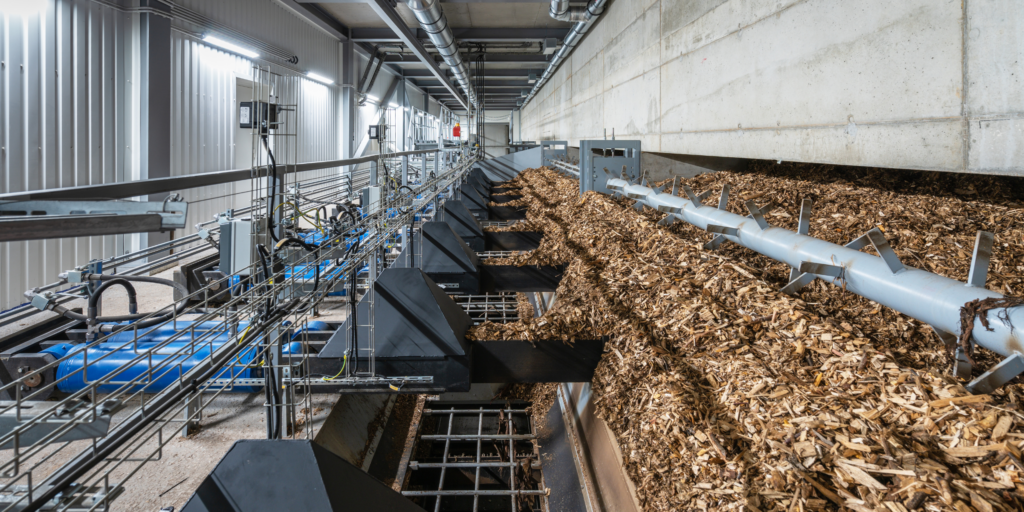
HETAS summarises the recent Biomass Strategy 2023
This month we saw the eagerly anticipated publication of the governments Biomass Strategy. Published on the 10th August 2023, the Biomass Strategy sets out steps government intends to take to strengthen biomass sustainability and the opportunities for the use of sustainable biomass across multiple sectors of the economy in support of achieving the UK’s net zero target.
It builds on the 2021 Biomass policy statement and the Powering up Britain strategy which emphasised the important role that biomass will play in Britain’s fully decarbonised power system by 2035, subject to security of supply.
The government strategy is supported by the following:
- Public dialogue on the role of biomass in achieving net zero
- Analysis of responses to the call for evidence for biomass strategy on the role of biomass in achieving net zero
The United Kingdom has set an ambitious target to achieve net zero greenhouse gas emissions by 2050. The publication gives a vital insight to the sector into governments short, medium and long-term views on the role of biomass as a renewable supply of energy across the three energy types (transport, heat and electricity) as well as in the non-energy sectors.
Importantly, the strategy restates the government’s firm commitment to biomass sustainability and reviews the potential future availability of sustainable biomass to the UK and how the resources could be prioritised strategically across the economy to help achieve net zero targets along with wider environmental and energy security commitments.
Confirming this position, The Rt Hon Graham Stuart (Minister of State for energy Security and Net Zero) suggests that “biomass’ unique potential as a carbon negative renewable energy source will prove ever more valuable in our efforts to reduce emissions.” The policy document identifies the complex challenges related to decarbonisation across the various sectors and the need for negative (carbon) emission technology.
Speaking on the strategy, HETAS CEO Bruce Allen:
We welcome the publication of the Biomass Strategy which confirms governments commitment to biomass and making sure that when used biomass it is sustainable, contributes to net zero and efficiency while minimising any public health impacts relating to air quality. Through our work with government in recent years we have seen recognition of the importance of biomass, sustainability, fuel quality as well as safety considerations such as installation and boiler maintenance. We look forward to continuing this important work and realising the opportunities biomass present in the short, medium and long term.
Importance of Biomass
Statistics released in the strategy show biomass accounts for 8.6% of the UK’s energy supply in 2022. The UK produces around 65% of its biomass supply, while the rest is imported either as a final fuel or raw or processed feedstock.
The strategy addresses some key themes relating to the future of biomass, including:
- Biomass sustainability
- Biomass availability
- Priority use of biomass
- Biomass with carbon capture and storage
- Use of biomass across the economy
Short, medium and long-term plans
As part of the strategy, the government says it will facilitate sustainable biomass deployment in the short term (2020’s) through a range of incentives and requirements covering power, heat and transport. In the medium term (up to 2035), the UK government says it intends to further develop biomass uses in power, heat and transport sectors to support the delivery of Carbon Budget 6. The strategy says this is in advance of transitioning away from unabated emission uses of biomass where possible to uses, such as BECCS.
Longer term plans are less certain, owing to wide ranging uncertainties and evidence gaps.
Looking at each of the key themes in more detail, there are some areas for the biomass sector to focus on. When it comes to sustainability, as cross-sectoral sustainability framework is developed, any new government support for biomass will be expected to meet the requirements. Government has also committed through cross-department working to ensure that environmental permitting will continue to reduce harm to health and the environment from the combustion of biomass.
Net zero principles allow for biomass to be prioritised where there are no other available alternatives for decarbonisation, recognising the fact that there are areas of the economy that are hard to decarobonise, including off grid properties. Creating a circular economy for biomass also sits highly within the strategy.
Another vital factor identified within the strategy is the need for securing a sustainable supply of biomass, both from within the UK and from imports. There are hints that sustainable requirements for biomass will be tightened, with a consultation on a sustainability framework to support this approach.
Carbon capture
Greenhouse Gas Removal (GGR) technologies are essential to the UK’s Net Zero Strategy, with well-regulated Bioenergy with Carbon Capture and Storage (BECCS) being able to provide genuine GGR’s and low carbon energy. Carbon capture and storage plays an important role in the future of biomass. The strategy states that in 2023 government will set out a vision for the UK carbon capture, usage and storage (CCUS) sector.
When it comes to biomass use across the economy, key messages identified through the strategy include:
- Electricity
- Biomethane and greening the gas grid
- Heating – with a focus on certain properties such as off-gas grid homes
- Combined heat and power
- Transport – biofuels
Directly looking at the use of biomass in heating, The Heat and Buildings Strategy (linked below) outlines the strategic approach government is taking to the decarbonisation of the heat and building sector. Support for biomass for use in domestic and non-domestic heating has until recently been supported through the Domestic Renewable Heat Incentive (DRHI) and the non-domestic equivalent (NDRHI). More recently the Boiler Upgrade Scheme provides support for biomass in certain settings. The strategy focuses on the 1.1 million homes in England not connected to the gas grid, with an anticipation that many will switch to heat pumps. Recognising that heat pumps will not work everywhere, biomass could be used on properties not readily suitable for electrification.
The Biomass Strategy 2023 links into various other government policies, some of which are listed here.
- Policy paper – Biomass Strategy 2023
- Policy paper – Net Zero Strategy: Build Back Greener
- Policy paper – Powering up Britain
- Policy paper – British energy security strategy
- Policy paper – Heat and building strategy
- Policy paper – 2030 Strategic framework for international climate and nature action
- Policy paper – Low Carbon Fuels Strategy – call for ideas – strategy due in 2023
- Policy paper – England Trees Action Plan
- Policy paper – Resources and waste strategy for England
- Corporate report – Environment Improvement Plan
- Guidance – Carbon budgets
- National Statistics – Digest of UK Energy Statistics (DUKES): renewable sources of energy
The strategy also discusses biomass in Scotland, Wales and Northern Ireland, identifying the plans and strategies each devolved administration is delivering and planning.



